STTT | The Research Group led by professor Zhao Jincun of SKLRD revealing the immune escape characteristics of new Omicron strains XBB.1.5, BQ.1, BQ.1.1, BF.7 and BA.2.75.2
2023-03-211909The subvariants of novel coronavirus spreading in the world keep changing. At present, several new subvariants have formed, as there are increasing infection cases, showing a trend and potential to replace the original epidemic strain BA.5. It is in an urgent need to be evaluated and verified whether the protective effect of the current vaccines is still effective or there has been immune escape. Recently, professor Zhao Jincun’s research group of the SKLRD cooperated with a number of domestic organizations and published the academic paper “Antigenic characterization of SARS-CoV-2 Omicron subvariants XBB.1.5, BQ.1, BQ.1.1, BF.7 and BA.2.75.2” in the international journal Signal Transduction and Targeted Therapy online. The study used pseudovirus neutralization experiment to evaluate the levels of plasma neutralizing antibodies in various populations induced by infection and vaccine, and found that the new Omicron variants XBB.1.5, XBB, BQ.1, BQ.1.1, BF.7 and BA.2.75.2 showed significant immune escape for homologous and heterologous vaccination recipients and those who recovered from the infection of strains WT, Delta, BA.2 and BA.5, of which the XBB / XBB. 15 showed a stronger neutralizing escape.
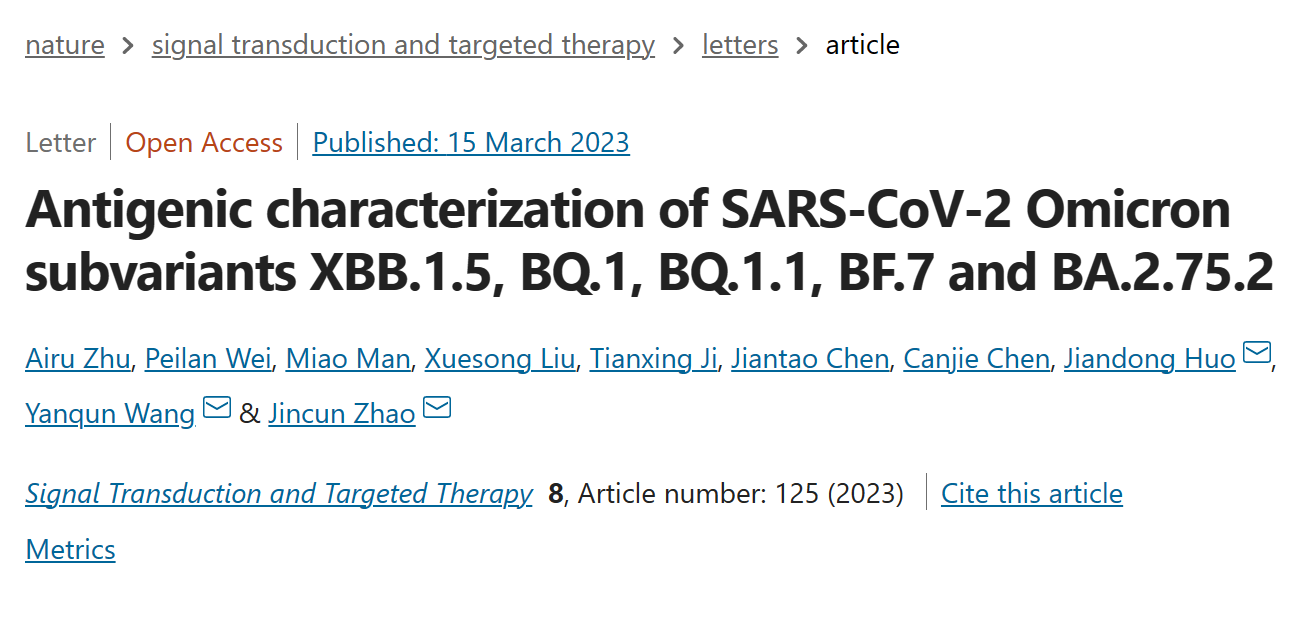
This study conducted pseudovirus neutralization tests by collecting plasma samples from individuals vaccinated with homologous or heterologous sequential vaccines, and plasma samples from natural infection and breakthrough infection individuals. The results revealed that in WT (WC group) and Delta infected patients (DC group), the vaccines had good protective effects against the wild-type (WT) strains, their protective effects were relatively weak against the strains BA.2, BA.4/5, BF.7, BQ.1, BQ.1.1, BA.2.75.2, XBB/XBB.1.5, especially strains like BQ.1, BQ.1.1, BA.2.75.2 and XBB / XBB.1.5. Compared with the natural infection cases, the neutralizing antibody titers of the breakthrough infection cases by BA.2 (B A.2 group), and BA.5 (B A.5 group) had risen significantly, but with limited protective effects against strains like XBB / XBB.1.5 (Figure 1).
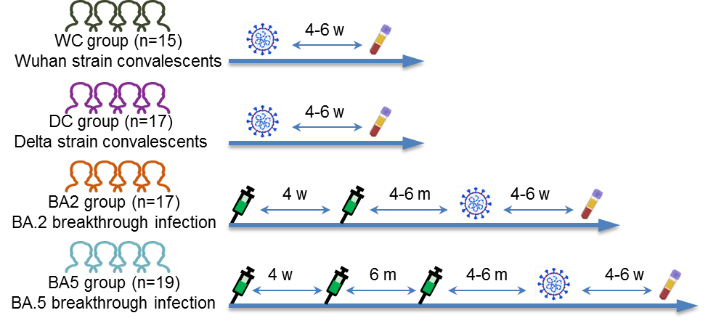

(Figure 1 Evaluation of neutralization protection effects of recovery cases and breakthrough infection cases against the Omicron subvariants)
This study also evaluated the preventive and protective effects of multiple vaccine immunization strategies against Omicron subvariants. It was discovered that plasma from 3 inactivated doses (groups I-I-I) showed low protective effects against all Omicron mutant strains. The plasma of those vaccinated with three doses of mRNA vaccine (group B-B-B) had a significantly higher neutralizing capacity against the Omicron mutant strains than those vaccinated with three doses of inactivated vaccine. Two doses of inactivated vaccine plus one booster dose of mRNA vaccine (group I-I-B) or aerosol inhalation of adenovirus vaccine (group I-I-A) significantly improved the neutralization against Omicron mutant strains, with two doses of inactivated vaccine and one dose of aerosol inhalation of adenovirus vaccine (group I-I-A) showing an overall advantage of neutralizing against the Omicron subvariants. Overall, the three groups of B-B-B, I-I-B and I-I-A showed a certain neutralization capacity against the Omicron subvariants, and good protective effects against domestic epidemic strains like BA.4/5 and BF.7, but still low against XBB strains. The sequence of different vaccination and immunity boosting strategies in terms of protective effects is I-I-A> B-B-B> I-I-B> I-I-I (Figure 2).
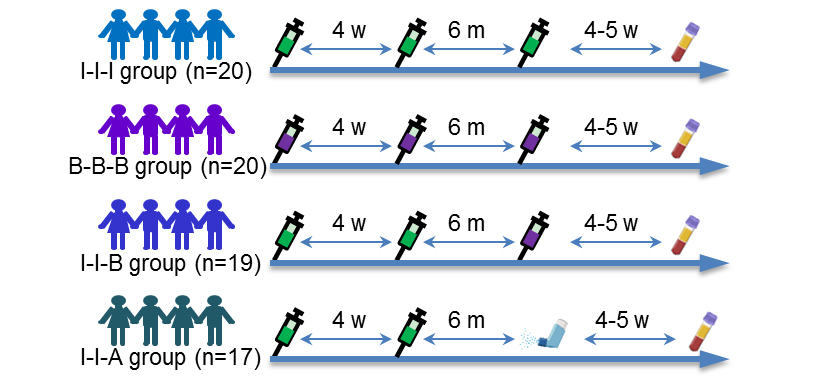

(Figure 2 Evaluation of neutralization protection effects of different vaccination and immunity boosting strategies)
The research group compared the protective effects of three doses of inactivated vaccine plus one dose of booster mRNA vaccine (group I-I-I-B) or aerosol inhalation of adenovirus vaccine (group I-I-I-A). The results revealed that their induced neutralization capacity was similar, and both produced high neutralizing antibodies against WT strains and had certain protective effects against Omicron strains, but the neutralization capacity showed a decreasing tendency: BF.7> BQ.1> BQ.1.1> BA.2.75.2> XBB/XBB.1.5, which almost had no protective effect against XBB / XBB.1.5 (Figure 3).

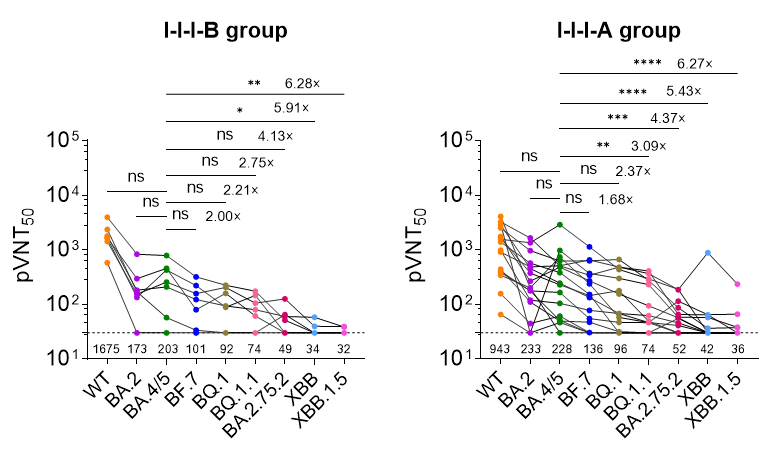
(Figure 3 Evaluation of the neutralizing capacity of those that have received the second booster injection)
Among the 10 groups of respondents in this study, the immune escape capacity of neutralizing antibodies was ranked as follows: BA.2, BA4/5< BF .7< BQ.1< BQ.1.1< BA.2.75.2< XBB/XBB.1.5. The sequence of the different vaccine immunization strategies according to the neutralizing capacity against Omicron strains was as follows: I-I-I <I-I-B <B-B-B <I-I-I-B <I-I-I-A <I-I-A. The vaccines used in this study were designed based on the sequence of early strains of the wild-type, with a big difference from the XBB/XBB.1.5 strain. The results of the neutralization experiment also showed that different immune combinations of multiple vaccines designed based on this sequence had little protective effect against the XBB/XBB.1.5 strain (Figure 4). In general, both infection of the pre-sequence strain and immunization of the early vaccine strains have failed to provide sufficient protection against the latest BA.2.75.2 and XBB / XBB.1.5 strains, which suggests that we need to accelerate the update of vaccines, carry out the sequential vaccination as early as possible in subsequent vaccination strategies, and mix different vaccination methods.
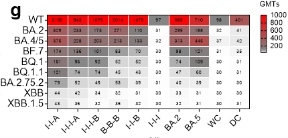
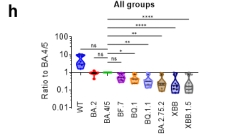
(Figure 4 Comparison of the escape of different mutant strains and immunization strategies of different vaccines)
Dr. Zhu Airu and Master Wei Peilan with the SKLRD, Dr. Liu Xuesong with the First Affiliated Hospital of Guangzhou Medical University, Miu Man, Deputy Director of Macau University of Science and Technology Hospital, Dr. Ji Tianxing from the Second Affiliated Hospital of Guangzhou Medical University are the first authors of this paper. Professor Zhao Jincun, Professor Wang Yanqun and Professor Huo Jiandong are the corresponding authors; this study is supported by the key projects of the Ministry of Science and Technology and the National Natural Science Foundation of China.
Original link:https://www.nature.com/articles/s41392-023-01391-x
















